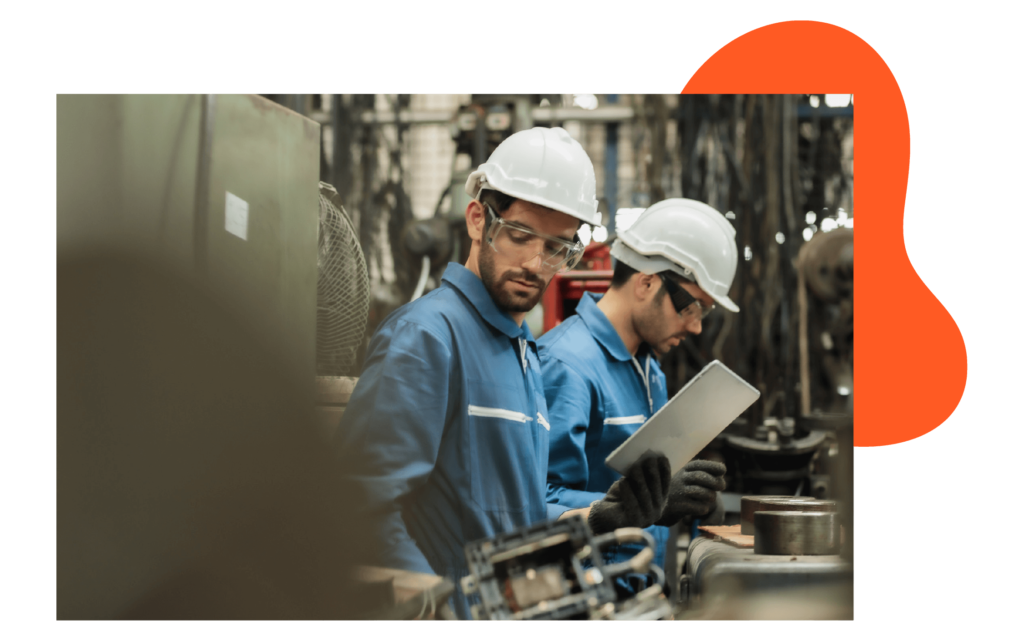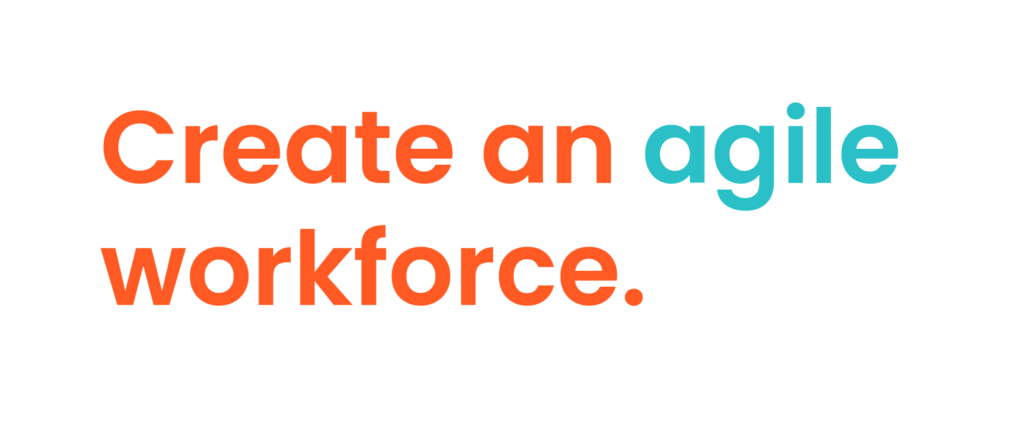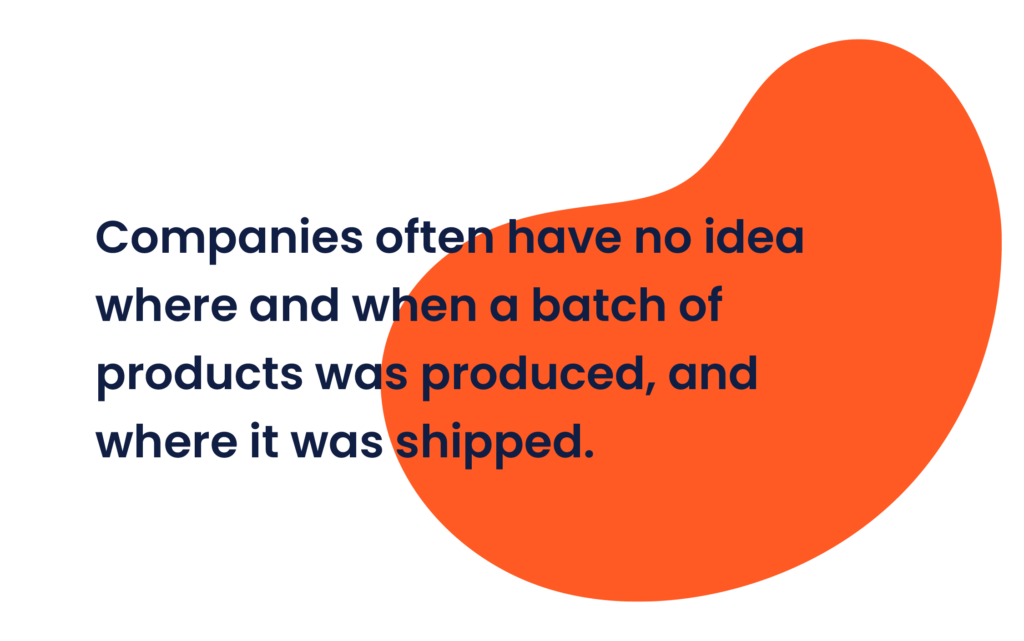
The 5 most important manufacturing trends in 2022
Discover the 5 most important manufacturing trends in 2022 that every manufacturer should know about.

“In my kingdom, you have to run as fast as you can just to stay in the same place.” the Red Queen tells Alice in Lewis Carroll’s classic children’s book. Carroll probably wasn’t thinking about manufacturing when he wrote that sentence, but it’s nevertheless perfectly applicable to it. In order to maintain a successful manufacturing operation, you have to keep up with the times. For manufacturers this means being aware of, and exploiting, important technological manufacturing trends.
Trends, however, come and go like the clouds; it is difficult to determine which ones will stick, and which ones can be safely ignored. This is exactly why we’ve set up this concise trend forecast in which we take a look at next year’s foremost trends that every manufacturer should know about.
In our opinion, these are the five most important manufacturing trends in 2022:
Let’s discover why these trends are of crucial importance to any manufacturing operation.

1. Hyperautomation
In the broadest sense, hyperautomation can be defined as the aim to automate every process in an organization that can be automated. The goal of hyperautomation is to link up and integrate tools such as process and task mining tools, automation development tools, and business logic tools, and enrich these with Artificial Intelligence (AI) and machine learning technologies. Through this process, a system is created that has the ability to perform tasks that previously required the attention of a decision-making entity like a human. Hyperautomation therefore goes a step further than Robotic Process Automation (RPA), which is limited to standardized, repetitive tasks.
The benefits of hyperautomation
The great thing about hyperautomation is that it automates complex processes that in the past necessitated human intervention. It frees factory floor workers from performing non-value-added work and thereby makes them more efficient, a benefit that is consequently extended to your manufacturing operation at large. A hyperautomated system can even automatically detect processes that it can automate. In other words, hyperautomation has the possibility of automatically automating your factory.
Hyperautomation on the shop floor
A hyperautomated system thinks with workers while they perform their work. Let’s take a maintenance task as an example. Instead of sending workers a routine trigger to check on a machine, a hyperautomated system can actually detect or predict when a machine needs maintenance, brief a worker on how to perform the maintenance task, show them which tools they need and where those are to be found, and so on.
Hyperautomation in 2022
Although hyperautomation is currently still in its infancy, 2022 will see more and more manufacturers discovering and researching its possibilities.

2. The connected worker and multiexperience
Digital manufacturing operating systems (DMOS) like 4Industry have made it possible for factory floor workers to use smart devices, such as smartphones and tablets, to interact with their environment. Things that were paper-based in the past – e.g. SOPs and deviation reports – are now entirely digital. This process of digitization has obvious benefits: workers are more efficient, processes are standardized, and important information is stored in an easily accessible database. Connected workers – as these digitally augmented employees are called – are the way of the future.
There is, however, a downside to using handheld devices, as it is oftentimes impractical for a worker to operate a machine while simultaneously holding a tablet or phone. A worker should ideally be able to tap into the digital world while having his hands free to perform physical work. The manufacturing trend of multiexperience has made this possible.
Multiexperience: the handsfree solution
By tailoring the experience of the digital world to the use cases of operators, the digital transformation of the factory floor can occur in a much more practical way. Multiexperience introduces devices such as augmented reality glasses, smartwatches and head-mounted wearables to the factory floor. Operators now always have a digital device at hand that’s perfectly compatible with the task they have to perform.
If an operator needs to take a picture of a faulty machine, he can grab his smartphone, and if he then needs to perform a task that requires the use of both hands, he can pocket his handheld and start using his head-mounted wearable. As all these devices tap into the unified digital world of a DMOS, operators can seamlessly hop from device to device without losing any progress.

3. Democratization
In the context of manufacturing, the term ‘democratization’ denotes the sharing of data in return for knowledge about process optimization. Democratization is a collaborative effort that can take various shapes:
- A factory shares machine-generated data with its vendor. The vendor analyzes the data and gives the factory information on how to use the machine more efficiently.
- A group of factories that suffer similar lossesstart sharing information about those losses with each other.
- A factory shares data with global teams, who in turn give advice on how to improve.
Digital democratization
Democratization is currently still a largely manual – and therefore inefficient – process. Digitalization can automate the process of democratization and thereby give it a significant boost. By connecting machines to the industrial internet of things (IIoT), data can be automatically sent to a vendor, who can then analyze that data and create updated work instructions that detail how to use a machine more efficiently. If a factory runs on a DMOS, these updated instructions can be automatically sent to workers. Automated democratization, in short, makes improving the efficiency of your machines a smooth and straightforward process.
4. Personalized products and agile manufacturing
Personalized products have become enormously popular. A personalized product can be anything from a soda bottle with its consumer’s name on it, to a piece of clothing with a customized color. Although personalized products are of great value to consumers, producing them can be very demanding for manufacturers, as many factories do not have the flexibility for efficient production.
The importance of agility
Without agility, factories are doomed to be unable to quickly react to changing market circumstances. Being agile first of all means that a manufacturing operation’s ERP is capable of keeping track of a wide array of customized orders. But agile manufacturing more importantly consists of having the ability of performing quick changeovers. Changeovers often take a lot of time, which is a problem when a lot of personalized products have to be made. Workers therefore need to be able to quickly perform a lot of different types of changeovers.
The agile worker
4Industry’s DMOS was made to create an agile workforce. Its knowledge base can store SOPs that detail how to perform changeovers. Operators can search for SOPs on their own accord, but they can also be sent them whenever a changeover needs to happen. SOPs can be embedded with pictures and videos to make them even clearer, and they can even feature a button by which a relevant expert can be called up if necessary.
SOPs furthermore contain checklists that ensure that operators correctly configure a machine’s settings. This is an important feature, as changeovers usually take a long time because settings are configured in the wrong way. By making SOPs easy to understand and ensuring changeovers happen smoothly with checklists, changeover time can be drastically reduced. Factories consequently become flexible enough to both quickly adapt to a changing market, and handle the production of various personalized products.

5. Traceability
In 2016, after a customer found a piece of plastic in her Snickers bar, Mars Incorporated recalled millions of chocolate bars in over 50 countries. The company, a spokeswoman said, could not ensure that other chocolate bars might not also have plastic in them, and was forced to do the enormous recall. This incident is illustrative of a problem many manufacturers have: a lack of traceability. Companies often have no idea where a batch of products was produced, when it was produced, where it was shipped, and so on. This lack of knowledge inevitably leads to drastic measures like Mars’ recall. But, luckily, a technological solution has appeared on the horizon.
Blockchain-enabled manufacturing
Blockchain, which functions as a virtual ledger, can be connected to supply chain management systems and manufacturing operations systems to give it the possibility of recording and storing important information pertaining to batches of products. Everything that happens to a batch of products is documented minutely and stored indefinitely.
If Mars had blockchain-enabled traceability back in 2016, they would have been able to pinpoint the batch of Snickers bars that had plastic in it. Because blockchain records the actions of operators working on a certain batch, manufacturers have insight in what went wrong with it, and can therefore implement changes to prevent similar incidents from occurring in the future.
The future of traceability
Advancements in blockchain technology will allow blockchain ledgers to be connected to quality management and warehouse management systems, creating a truly all-encompassing traceability-chain. The addition of a DMOS can bring additional improvements to traceability. 4Industry can, for instance, contextualize blockchain data so that it is intelligible for control room teams. This allows them to see that a batch is produced in a faulty way and then remotely create a task for workers to inspect and/or destroy that batch.

Related Articles

Digitize your inspections, audits and checklists

4Industry targets Nordic market via strategic partnership with Advania

